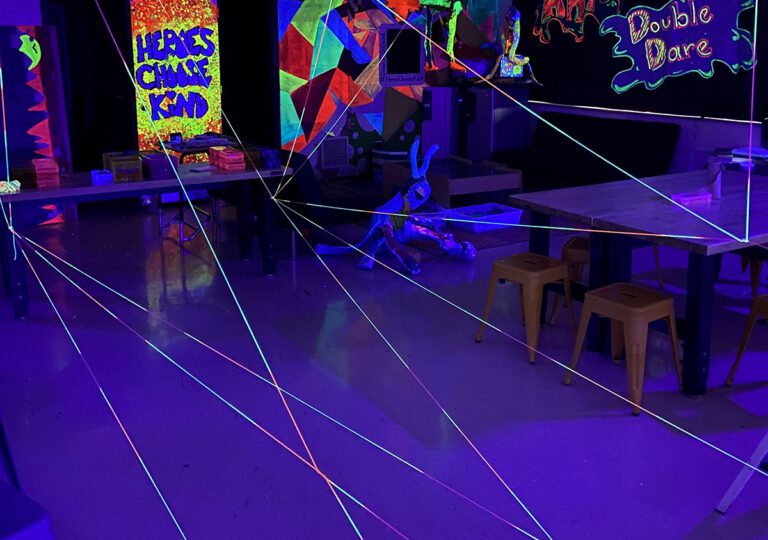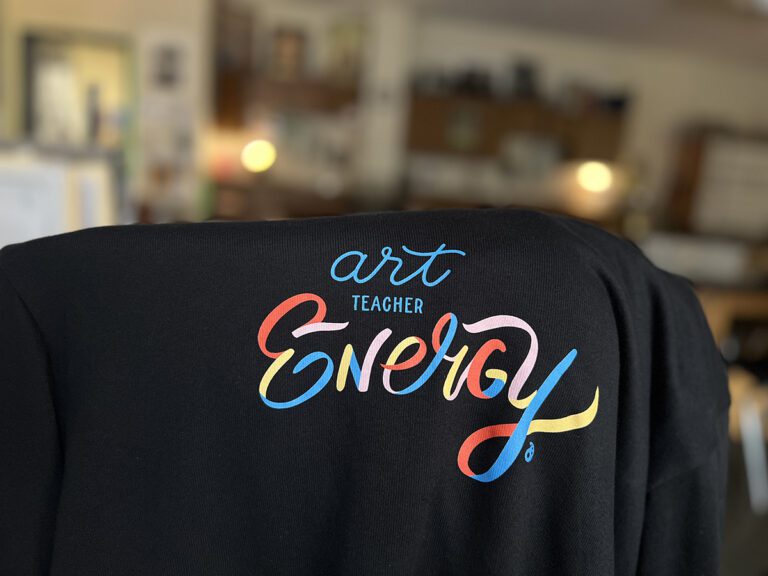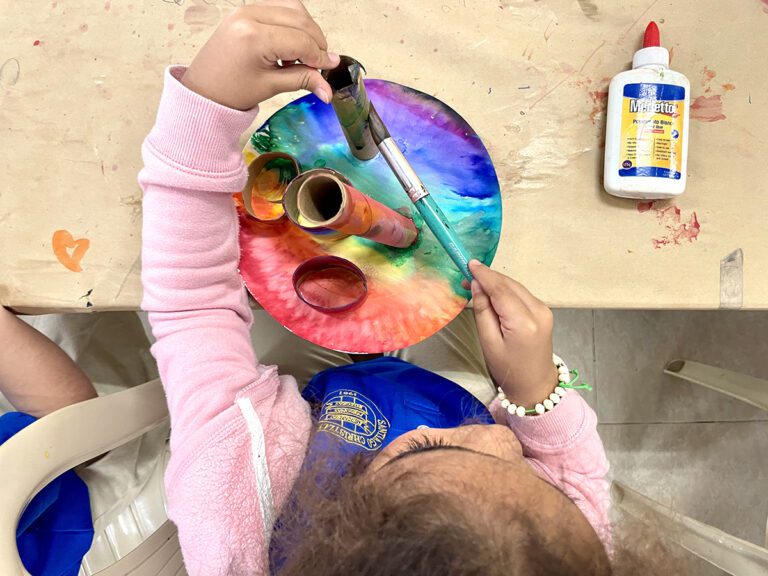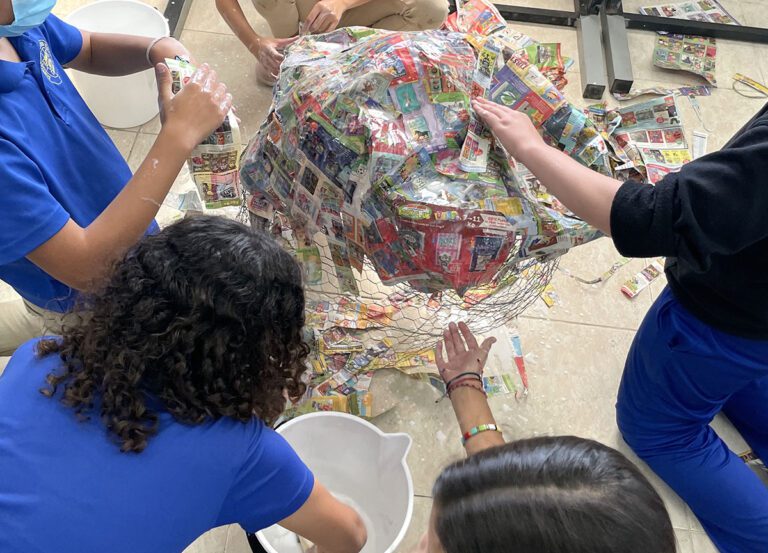Transitions between classes can be some of the most stressful parts of your day. Your previous art class quickly exits the art room, you run around checking behavior charts and management tools as the last kid in line leaves your room. You scan the room to make sure you have everything out for your carpet talk and table demonstration while the next group of excited students waits at your art room door. Now, it’s time to shine.
No matter what happened in the previous class, you need to be ready to be your best for your next group of artists!
Whether you are a first-year teacher or a veteran teacher, it is crucial to establish expectations about how students enter the art room. Specifically, communicate with your classroom teachers. Tell them your expectations such as, “Please wait to send students into the art room until you see that I am at the door to greet them.” The students should also know not to enter the room until you are ready for them at the door. This simple request can change the entire atmosphere of how you start each class period with your artists.

This practice is backed up with research. One study found, “Teachers who spend time on the front end to implement strategies such as the PGD [positive greetings at the door] will eventually save more time on the back end by spending less time reacting to problem behavior and more time on instruction.” Furthermore, according to a 2007 study, “A welcoming classroom environment doesn’t benefit students alone—it can improve the teacher’s mental health as well. Slightly more than half of the teachers—53 percent—feel stressed by student disengagement or disruptions. The consequences can be serious: A 2014 study found that ‘teachers report classroom management to be one of the greatest concerns in their teaching, often leading to burnout, job dissatisfaction, and an early exit from the profession.’”
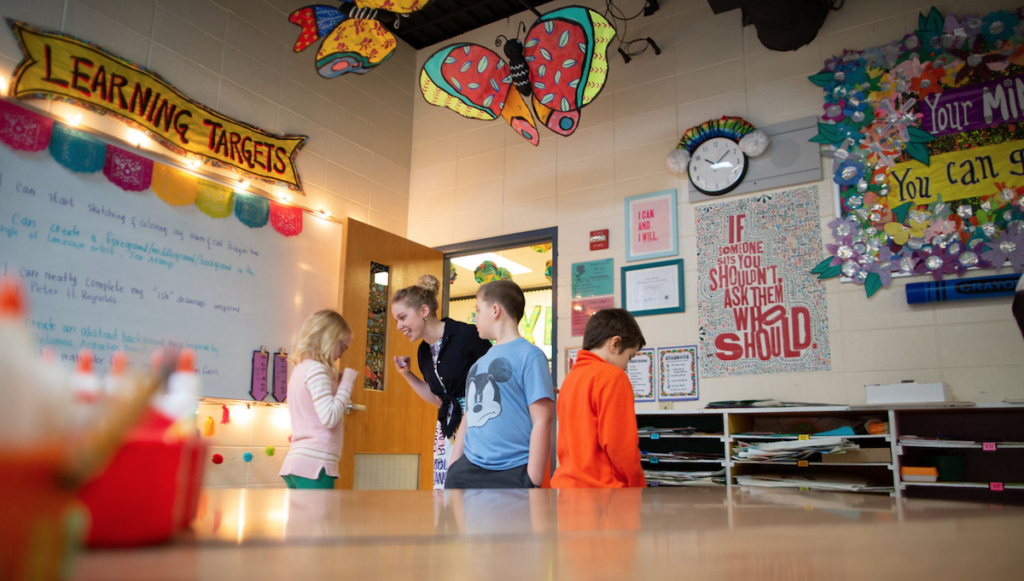
Let’s take a look at the main reasons it’s so important to greet kids at the door:
1. Set the tone.
- Take a moment to have a collective class deep breath.
- Gauge student behaviors based on hallway etiquette.
- Compliment particular students or the entire class on strong readiness skills.
- Smile and prepare yourself to be your best for your students.
- You can even create a special entrance routine like this teacher and his students’ personalized handshakes!
2. Connect with each student.
- Use eye contact and welcome each student, saying their name. It may be the only time you talk directly to them during class. Showing each student you are there for them reminds them of their safe environment for learning.
- Redirect any students you don’t feel are ready to enter the art room. Use classroom entry time to address any students who are struggling with self-control.
3. Go over directions.
- If you keep it short, you can explain a few directions in the hallway. For example, “Find a circle spot on the carpet and close your eyes,” or, “Collect a paper from the demo table, write your class code and name on the back, then meet me at the carpet with just you.”
- Review expectations of student behavior and reinforce positive choices.
4. Transfer student information with the classroom teacher.
- A quick note about who is absent from class or who might need to leave early gives you time to connect with your fellow teacher.
- You may also exchange student behavior charts or quickly discuss who might be struggling with listening skills to give you a quick clue for successfully managing all your students.
Instead of asking, “How can I fix misbehavior?” teachers should ask, “How can I create a classroom environment that discourages misbehavior in the first place?”

Our jobs are busy! It’s a fact. At times, you might feel overwhelmed by the amount of time spent managing classroom behavior or transitions of classes. Just remember taking the time to build meaningful routines with students at the beginning of the year can set the precedent for how students act the rest of the year.
For more about setting the tone, check out this great article about greeting kids at the door or our Art Ed Now Podcast- Ep.103 How to Stay Sane with Oversized Classes with tips about running a respectful classroom!
How do you welcome your students to the art room?
How do you ease your transitions between classes?
Magazine articles and podcasts are opinions of professional education contributors and do not necessarily represent the position of the Art of Education University (AOEU) or its academic offerings. Contributors use terms in the way they are most often talked about in the scope of their educational experiences.


